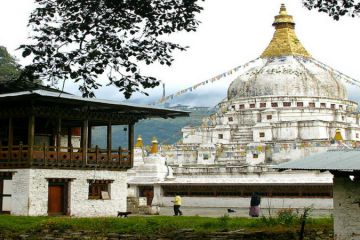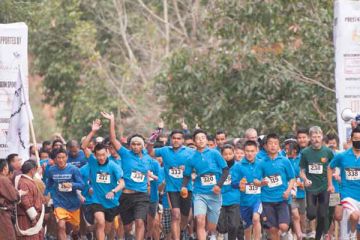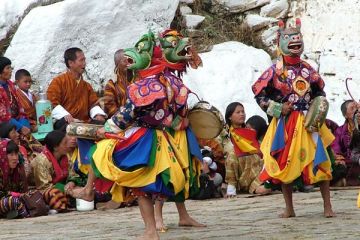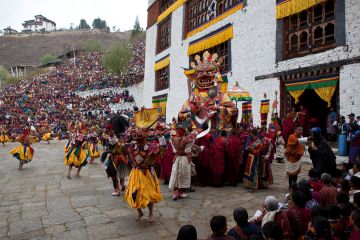Trongsa choekor Rabtse Dzong observes an annual three-day Tshechu in the courtyard of the Dzong. Assortments of masked dances are performed by the monks and traditional folk songs and dances are also showcased by the locals as an offering to the great Guru Padmasambhava and the local deities.
Trongsa choekor Rabtse Dzong observes an annual three-day Tshechu in the courtyard of the Dzong. Assortments of masked dances are performed by the monks and traditional folk songs and dances are also showcased by the locals as an offering to the great Guru Padmasambhava and the local deities. Thousands of devotees gather at the courtyard to witness the Tshechu and be blessed by the religious masked dances. The festival is an opportunity for the people to come together and celebrate the day together as a community. The sight of these carnival like festivals are just magical, the rhythmic stomps and jumps by the dancers and the quiet cheers of the people build up a whole lot of different excitement in the courtyard. The clowns (atsharas) at the Tshechu are a treat to watch as they go about entertaining the crowd by making small jeers and comical gestures. The highlight of the three day long Tshechu is the unfurling of the Thongdrol (appliqué religious scroll) which is said to liberate the onlookers at sight.






